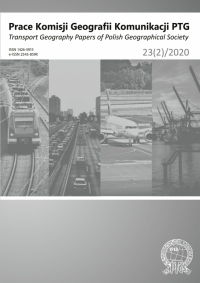COVID-19 lockdown in Poland – changes in regional and local mobility patterns based on Google Maps data
COVID-19 lockdown in Poland – changes in regional and local mobility patterns based on Google Maps data
Author(s): Maciej Tarkowski, Krystian Puzdrakiewicz, Joanna Jaczewska, Marcin PołomSubject(s): Geography, Regional studies, Health and medicine and law, Rural and urban sociology, Transport / Logistics
Published by: Wydawnictwo Uniwersytetu Jagiellońskiego
Keywords: COVID-19; Google Maps data; lockdown; mobility patterns; Poland;
Summary/Abstract: As no effective treatment or vaccine have yet been developed, the only way to prevent the spread of SARS-Cov-2 is to introduce social distancing measures. Scientific discussion regarding their actual effectiveness and socio-economic consequences has only just begun. Both declining mobility and changes in mobility patterns are obvious effects of social distancing. The main objective of this article is to present spatial diversity of changes in regional and local mobility in Poland with the use of data gathered and provided by Google LCC. As for the regional dimension, the mobility has declined steadily in most of the analysed areas. The regional changes were more visible only in the case of the following categories of areas: grocery & pharmacy and parks. The initial correlation analysis has shown that distribution of those changes more or less reflects spatial voting patterns. Both historical and cultural factors may explain such results, including ingrained habits, collective attitudes towards politics and group values. In the local context, illustrated by the analysis of changes in travel time from housing areas in Gdańsk, Gdynia and Sopot to the business and science centre in Gdańsk-Oliwa, a noticeable yet spatially diversified decrease in drive time (by private car) has been observed. The most significant reduction in travel time was recorded in peripheral areas accessible by high-speed roads which are normally jammed during peak hours. The mobility constraints have led to highly reduced traffic congestion, and consequently, shortened the travel time.
Journal: Prace Komisji Geografii Komunikacji PTG
- Issue Year: 23/2020
- Issue No: 2
- Page Range: 46-55
- Page Count: 10
- Language: English

